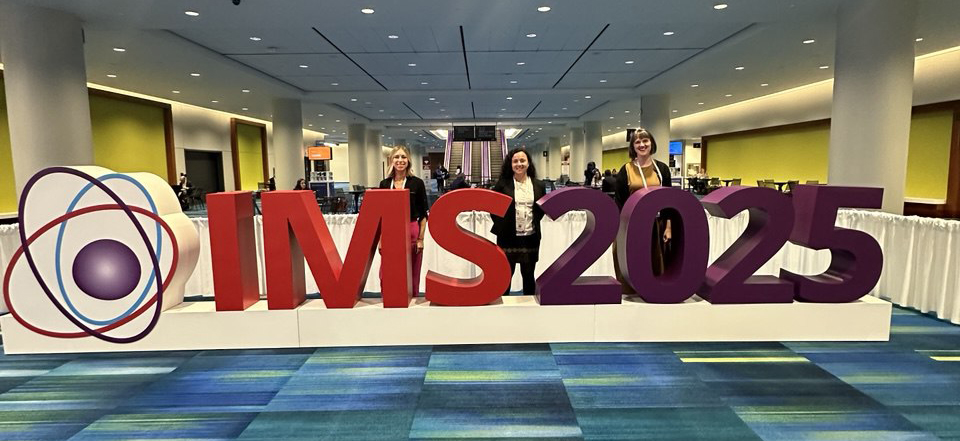September 24, 2025
Highlights from the International Myeloma Society (IMS) annual meeting 2025
Highlights from the International Myeloma Society (IMS) annual meeting 2025
On September 17-20, Myeloma Patients Europe (MPE) attended the International Myeloma Society (IMS) Annual Meeting in Toronto, Canada. It is one of the most important conferences for world-renowned myeloma experts and researchers. The IMS Annual Meeting focuses on basic science, preclinical, and clinical aspects. MPE was there to learn about the latest clinical updates in myeloma and share patients’ perspectives with key stakeholders in the field.
This year, Myeloma Canada, an MPE associate member, hosted an International Patient and Caregiver Conference prior to the IMS Annual Meeting. It gave the Canadian myeloma community great opportunities to interact with global healthcare professionals on key myeloma topics. MPE co-CEO Katie Joyner presented MPE’s vision, goals, mission and programmes in the panel discussion “Advocacy groups in myeloma: you are not alone,” which was composed of patient organisations from around the world.
What were the highlights of the Annual Meeting?
Smouldering myeloma – This is a hot topic, particularly since the European Commission regulatory approval of daratumumab (a monoclonal antibody) for patients with high-risk smouldering myeloma. There is an ongoing debate over when and how to treat, and even whether treatment is necessary at all. Presentations and conversations at IMS highlighted that many clinicians are not willing to treat smouldering myeloma patients at high risk of developing myeloma, despite the positive results of clinical trials, and despite the recent approval of daratumumab by the European Commission. The concern is that some patients will be overtreated and that other very high-risk patients will be undertreated, instead of starting on stronger myeloma frontline treatments. Experts will meet in the coming months to reach a consensus and write clinical guidelines on smouldering myeloma management.
Myeloma – Many abstracts addressed new treatment options and more personalised care:
- Bispecific antibodies (which bind to both T-cells, a type of immune cell, and myeloma cells, to initiate an immune response from the T-cells leading to the destruction of myeloma cells) are being investigated at earlier lines of treatment and in combinations, with promising effectiveness.
- Continuous efforts are being done to optimise existing treatment combinations, doses and maintenance strategies, especially to tailor them to specific groups such as frail or high-risk myeloma patients, as well as patients relapsing early after frontline treatment.
- Strategies to reduce dosing frequency without compromising efficacy are also considered to reduce side effects like infections and to improve treatment convenience.
- Trispecific antibodies (which are designed to improve effectiveness by binding to three targets (antigens), compared to two targets with bispecific antibodies) show good response rates even in heavily pre-treated patients or with extramedullary disease (when myeloma cells are found outside of the bone marrow, usually in the form of a tumour) which are usually associated with poor prognosis.
- The new generation of immunomodulatory drugs called CELMoDs is moving to later phase clinical trials, showing better efficacy with less side effects than currently used immunomodulatory drugs and providing new treatment options for patients who are refractory to lenalidomide or pomalidomide.
Patient Evidence – MPE co-CEO Kate Morgan presented the results of our research on the “Optimisation of patient-reported outcome measurement (PROMs) for patients with haematological cancer receiving CAR-T and bispecific antibodies: multi-stakeholder perspectives” at a poster session. She highlighted the need to better measure quality of life for CAR-T and bispecific antibodies and for new sensitive PROMs tailored to capture the side-effects of these treatments, such as cytokine release syndrome (CRS) and the emotional burden.
What does the future hold?
Outpatient use of bispecific antibodies and even self-administration are on the way. This could reduce costs and hospital resource utilisation as well as meeting some patients’ administration preferences. Outpatient use of CAR-Ts is also being considered and piloted, although it involves many challenges that still need to be addressed to ensure patients and carers are properly supported.
Next generation CAR-Ts, which for example have several targets on myeloma cells, are also on the way. In-vivo CAR-Ts, where the gene modification of the immune cells is done in the body instead of in a lab, like it is currently done, are under investigation. The hope is to generate more effective CAR-Ts, without the expensive, complex and long manufacturing of today’s products. Additionally, new treatment combinations are expected to help with the rising need to address relapse after CAR-T.
Finally, while the definition of a cure remains to be established in myeloma, physicians are starting to discuss functional cure for many patients. We hope to see those numbers rising in the future, as the best treatments become more available to patients.
